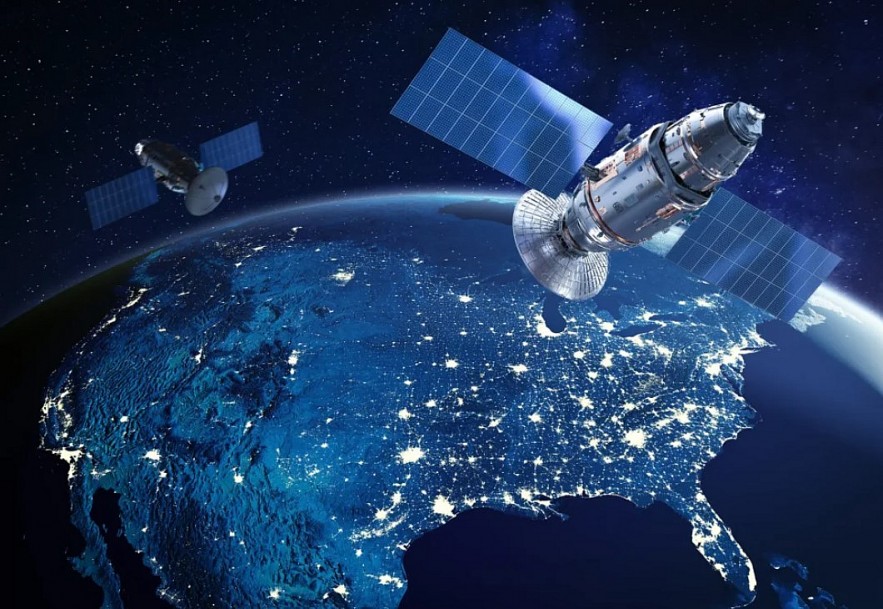TJS-16 and TJS-17: China’s Shadow Satellites Intensify a New Space Race With the US
 |
| The Chinese satellite TJS-3 is engaged in tracking spacecraft in geostationary orbit? |
Officially labeled as part of the Tongxin Jishu Shiyan (“communication technology experiment”) program, these satellites may represent far more than just telecom research. As both countries expand their military reach into geostationary orbit, a new phase of the U.S.-China rivalry is unfolding — this time, above Earth.
What Are TJS-16 and TJS-17 Really For?
The Chinese government claims the two satellites were deployed to test new communication technologies. But space analysts in the West aren't convinced.
While specific details remain classified, TJS-16 and TJS-17 are widely believed to be part of a covert Chinese military space initiative. Their true functions likely include:
-
Signals intelligence (SIGINT) collection
-
Satellite surveillance and inspection
-
Electronic warfare capabilities
-
Anti-satellite (ASAT) maneuver trials
These suspicions aren't unfounded. Over the past few years, satellites in the TJS series have performed orbital maneuvers consistent with non-civilian objectives — including what U.S. officials describe as satellite-to-satellite "dogfighting".
Close Encounters: The U.S. Space Force Reacts
In late April, the U.S. responded. According to satellite tracking data released by COMSPOC, a commercial space situational awareness provider, USA 324 — an American Geosynchronous Space Situational Awareness Program (GSSAP) satellite — conducted two close flybys near TJS-16 and TJS-17.
-
April 26: USA 324 passed within 10.5 miles of TJS-16
-
April 29: It closed to within 7.4 miles of TJS-17
These aren’t random flybys. The U.S. Space Force uses GSSAP satellites to perform “rendezvous and proximity operations,” enabling real-time inspection, intelligence gathering, and threat assessment of other space objects — including potential adversaries.
What’s remarkable isn’t just that USA 324 maneuvered so closely, but that the United States did so publicly. This signals a strategic intent to both observe and send a message: We’re watching.
The Bigger Picture: Why These Satellites Matter
This isn’t just a technical chess match. It’s part of a broader and accelerating space arms race.
-
China has rapidly advanced its space capabilities: a modular space station, lunar ambitions, and increasingly sophisticated orbital maneuvering.
-
The U.S., via Space Force and commercial partnerships, is doubling down on satellite resilience, orbital tracking, and space-based deterrence.
According to Gen. B. Chance Saltzman, U.S. Space Force Chief of Space Operations, China's ability to conduct “on-orbit satellite engagements” signals a shift in military space doctrine — from passive observation to active contestation.
These developments have led many analysts to warn that space is no longer a sanctuary. Instead, it's a potential battleground, with military posturing and surveillance operations replacing Cold War-era mutual suspicion on Earth.
Expert Voices: Mutual Hypocrisy or Strategic Signaling?
Jonathan McDowell, astrophysicist at the Harvard-Smithsonian Center for Astrophysics, summed up the double standard in a recent post on X (formerly Twitter):
“To be clear, I do not object to [U.S. Space Force] making such maneuvers. I object to the U.S. complaining when other countries do the same things we are doing.”
McDowell’s comment reflects a growing acknowledgment that space is now governed by strategic realism, not idealism. Every maneuver, every proximity operation, every classified satellite launch is now part of a complex geopolitical calculus.
What Happens Next?
All eyes are now on what follows. Will USA 324 return for more close passes? Will China respond with further orbital maneuvers or shadowing operations of its own? Will either country attempt an overt satellite interception?
Right now, there are more questions than answers. What’s clear is that both sides are locked in a silent but highly calculated standoff, thousands of miles above Earth — a contest for dominance where transparency is limited, and mistakes could be catastrophic.
Conclusion: The Future of Space is Militarized, and Already Here
TJS-16 and TJS-17 may be labeled “communication experiment satellites,” but their real legacy could be cementing a new era of strategic space competition. The days of peaceful, civilian-led space exploration are giving way to an orbital order shaped by surveillance, secrecy, and state power.
As both the U.S. and China escalate operations in geostationary orbit, the international community faces a stark choice: Establish rules and norms for space conduct, or risk turning the final frontier into the next front line.
 Top 10 Richest People in China 2025 - Facts About Chinese Billionaires Top 10 Richest People in China 2025 - Facts About Chinese Billionaires China's wealthiest billionaires in 2025 maintain their stronghold across sectors ranging from technology to manufacturing. This ranking reveals not just the scale of their fortunes, ... |
 China’s Top 10 Most Promising AI Startups After DeepSeek China’s Top 10 Most Promising AI Startups After DeepSeek Discover the 10 most promising Chinese AI startups following DeepSeek’s success, from leaders in foundational models to cutting-edge AI applications. Explore their founders, funding, strengths, ... |
 Why iPhones Still Aren’t Made in America—And Probably Never Will Be Why iPhones Still Aren’t Made in America—And Probably Never Will Be Why Apple still builds iPhones overseas despite U.S. pressure. Speed, scale, and skilled labor in Asia keep iPhone manufacturing abroad—making a U.S.-made iPhone unlikely, even ... |























